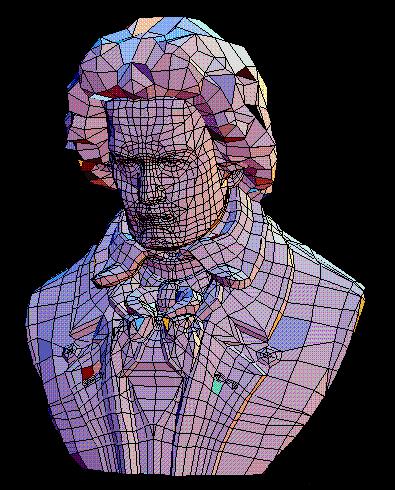A convergent point of view: scientist and musician are both right!
the compromise of views between scientist and musician in the way to consider the pianoforte is realized only in the perceptive dominion.
Paradoxically scientist and musician both are right, the scientist is inflexible conforming to the supreme authority of the physical laws, to the measurements and experimentation; the musician makes a completely truly assertion on the way the issue happens and enters into another dominion: the perceptive dominion.
The musician is talking about a phenomenon perceived rather than of a physical phenomenon. Therefore, in reference to a dogma of the cognitive psychology, the conflict between the scientist and the musician is resolved, making legitimate the paradox of the pianoforte rather than refuting it.

The answer of a physical system with a rather special contents in entrance is studied here: those of a human creature; outputs will be judged in its turn from a human creature as well, and therefore some psychophysics factors will necessarily enter into the argument and development of all the exposure and analysis of piano touch.
Has a matter of fact, for its operation and effectiveness like a musical instrument the pianoforte depends deeply on psychoacoustic and psychophysics aspects, the sounds that it produces are rigorously percussive, nevertheless from these our ears construct in some way lyric melodies. Physics of the sound produced with the instrument shunts in the interface of its keyboard which is compossed of a complex system of levers, nevertheless the fingers of the player find in some way the mode to manipulate all the available parameters of the sound.
The nature of music appreciation is a vast field of neuroscience research, enjoying music seems to involve both active and passive neuronal activity. This is surely true for playing piano, so in the moments of profundest involvement of the interpretation enjoyment the apreciation would be felt as a kind of effortless awareness, that is an intuitive passive and receptive act which involves discursive and reflexive processes in time. It follows therefore that while playing, contrary to what happens listening to the music alone, aesthetic perception and critical reflection have to be classed as deeply interlaced activities.
We must recognize nevertheless that there is a barrier that appears unsurmountable to orthodox science concerning all of this: the more emotional content has an event the less unanimous is the judgment given to it from a population, therefore more emotional content has an event and more its scientific approach becomes difficult!. For all of these considerations is not simple to specify standard objectives for the appreciation in general terms, and debatable also for the tactile appreciation in particular. Last, when measurements are realized (a very common endeavour in science), it is always necessary to specify standard objectives. For all this paradoxal scene, the compromise of views between scientist and musician in the way to consider the pianoforte is realized only in the perceptive dominion.


